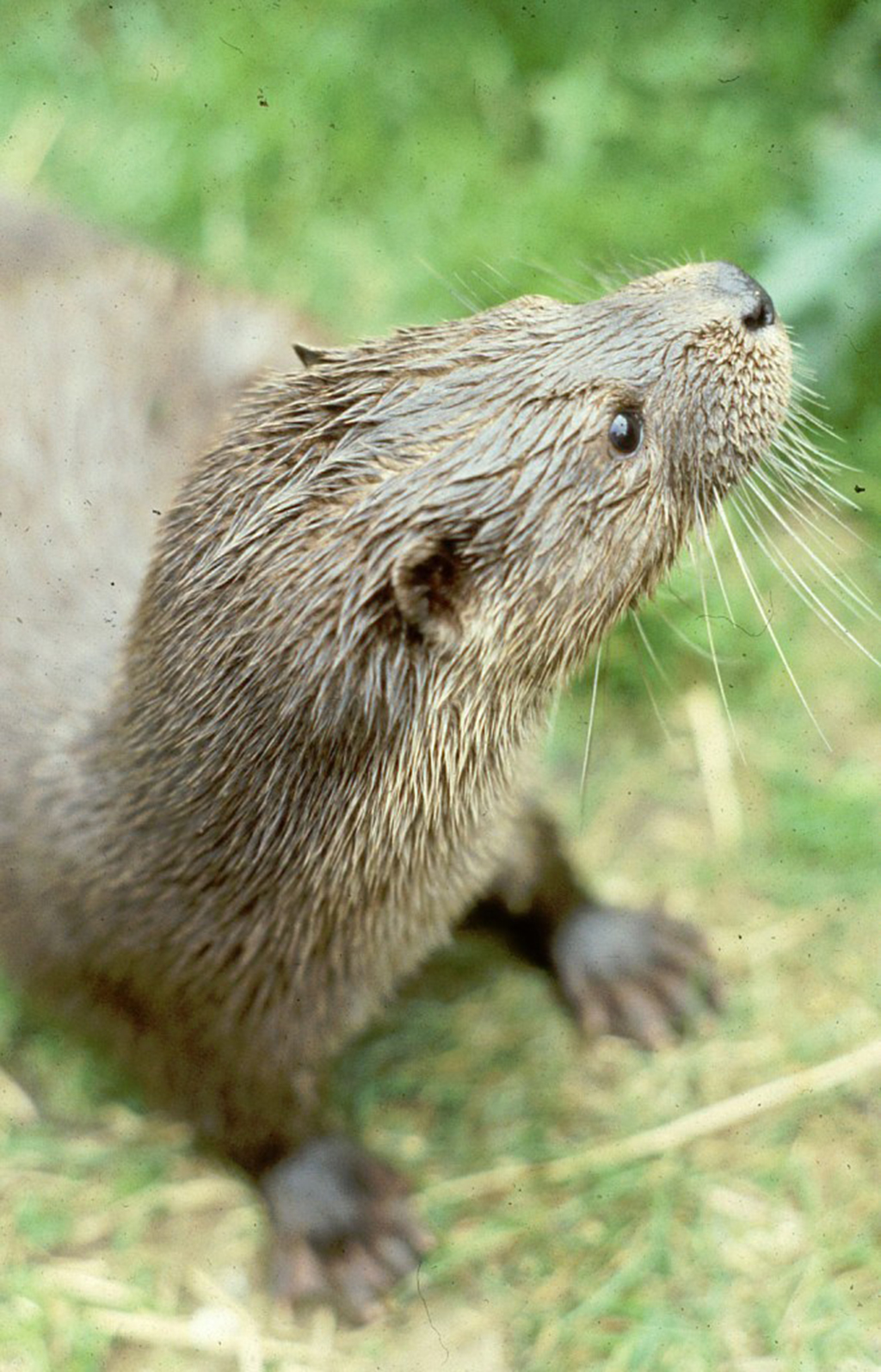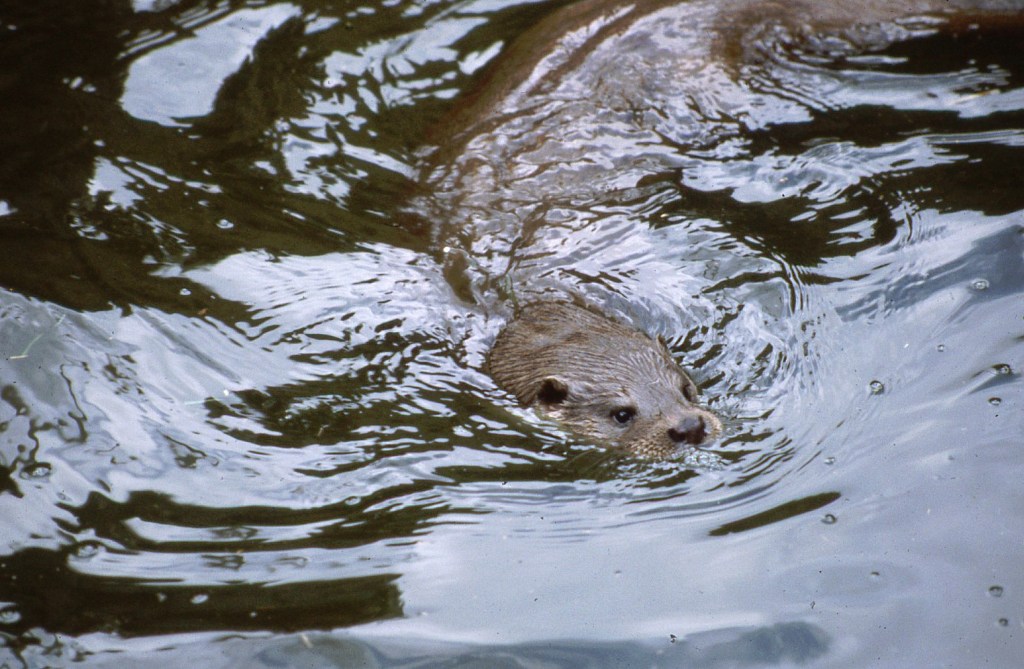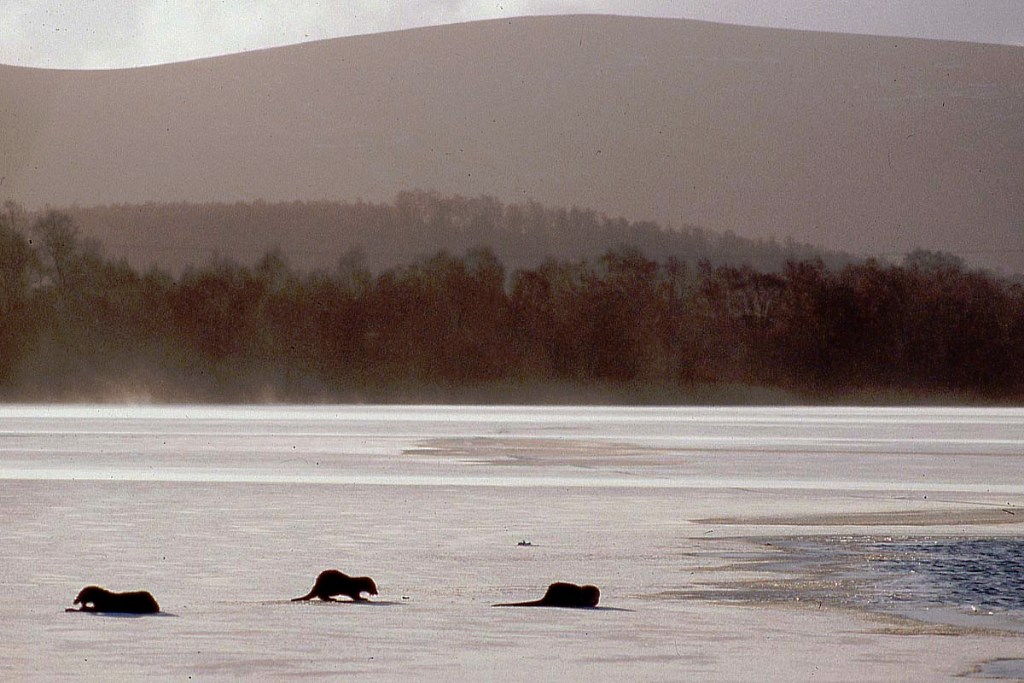
Bubbles under a fishing line mean otters
Having whiled away many hours along the banks of the River Dee, wildlife aficionado Hans Kruuk has followed an interesting group of otters.
He has found that each has their own intriguing personality.
Walking along a narrow path on the river bank of a beautiful, majestic stretch of the River Dee, ahead of me I spot a single figure in the current. Chest-waders, a fishing line curving across the water. The man has me worried, as I am following one of the otters here.
My animal is a large male whom I had nicknamed Nelson, carrying a radio-transmitter, and I am trying to keep a close eye on him whilst recording his behaviour. If he is disturbed by people, I might lose him out of sight. I need not have worried, though, as Nelson dives. A chain of bubbles shows him slide underneath the fishing line, carrying on and on with the current, the fisherman totally unaware.
Nelson is one of several male otters I have known here in Deeside, and which I followed closely. Males prefer the rivers for their base, from where they make forays along tributaries and lochs. Unlike the otter female, which lives in the reed beds or along the smaller burns. The Dinnet lochs are a favourite centre, where otters have their couches in the reed beds.

Penny, a female otter, in Deeside
The lovely incident with the salmon fisher showed just how oblivious people can be about the presence of otters right around them. One just does not realise otters’ presence along the tiny streams between fields, or right next to main roads, even in Aberdeen City itself in the Dee and Don. Otters are experts in concealing themselves, showing just their nose, eyes and ears above the water when people are around. And they use large areas: following an otter female with my radio-receiver at night, she would lead me along many stretches of water, on average some 40 kilometres of stream, and a male twice that. One moment they are here, but an hour later they might be miles away.
Not only do otters follow the streams wherever they are, they also lead me over long distances between watersheds, over the hills and through the fields. I think that otters are often responsible for the sightings of ‘the Big Cat’!

An otter in the Deeside water
In the early morning after my encounter with the salmon fisher I am at my usual observation place along the shore of one of the Dinnet lochs, hoping to meet up again with Nelson. A vain hope, though, as my radio receiver tells me, he is nowhere near. Leaving him to his devices, I settle down in the early sunshine, and slowly scan the surface of the loch with my binoculars, enjoying the various species of ducks that are feeding, mute swans, a few graylag geese. I notice that there is a quite large area of water that ducks appear to avoid, and within a couple of minutes I have an otter in my field of view, just its head, leisurely peering around.
Seconds later it disappears again, followed by the characteristic tail-flip, and the otter is gone from the surface. Its head looked smallish and rather slim, and the otter showed none of the behaviours that, to me, identifies a male, such as its tail floating behind, head slightly out of the water, conspicuous, and swimming as if heading for some distant destination. No, my present animal is spot-diving, and I am quite confident it is a female.

Otters on Loch Davan
I muse over the question: why should the two sexes keep out of each other’s ways? Is it anything to do with females keeping young cubs away from the males, who are known to be cannibals? Or do males keep to the rivers where they are likely to encounter larger salmon, leaving the smaller fish, such as eels of the lochs to the females (who are somewhat smaller than males)?
Up she comes again. She floats for some ten seconds, then dives, more or less in the same spot. A dozen more of such dives, and she emerges with an eel wriggling in her mouth. This time without any hesitation, she makes a beeline for the nearest reed bed, and disappears, eel and all. It is the end of my morning’s observation.
Otters are a main interest for me, being fortunate enough to be able to spend my life studying their behaviour in places all over the world, as well as that of hyenas, lions, badgers and others. For many years I watched carnivores in Serengeti, Kalahari, Galapagos, Shetland, Thailand, Alaska, Brazil and elsewhere, trying to find out how they live, and what keeps their numbers so low. Fabulous animals.
Hans Kruuk’s book The Call of Carnivores, Travels of a Field Biologist is published by Pelagic Press, 2019. £14.62
TAGS

